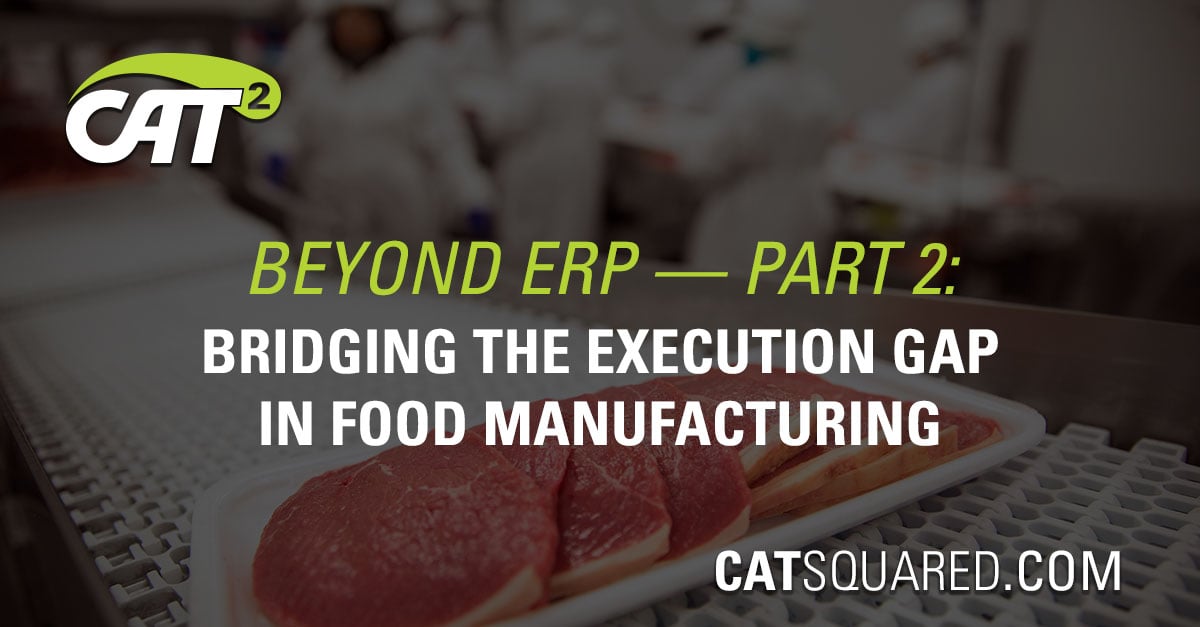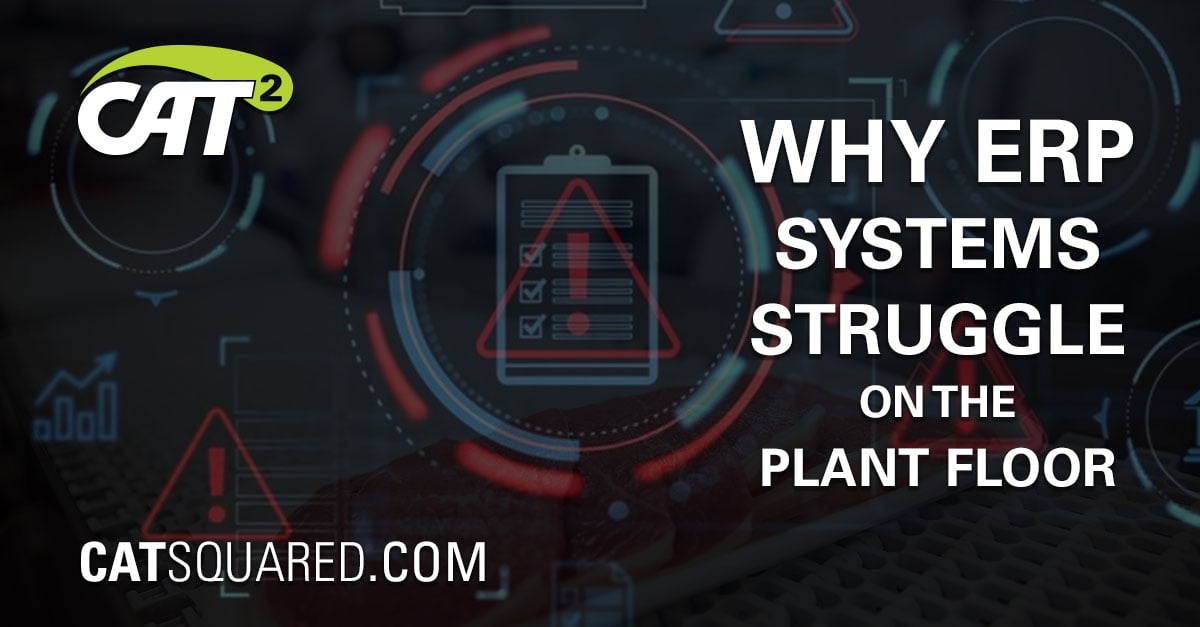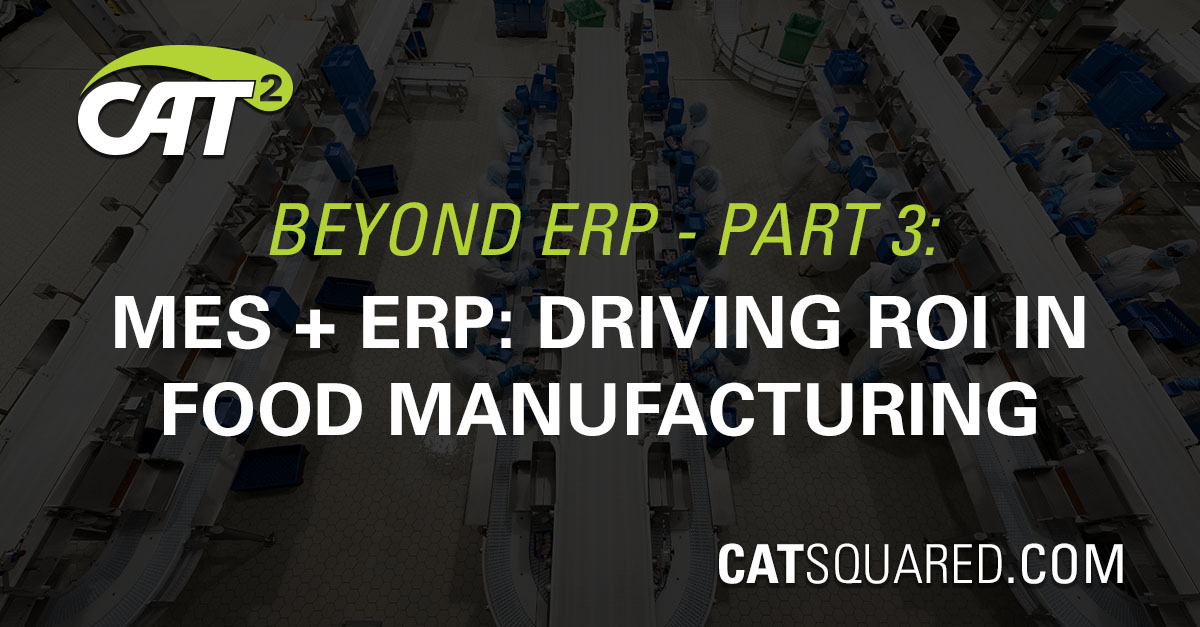In Part 1 of our Beyond ERP series, we explored why traditional ERP platforms struggle with the realities of food manufacturing. Now, let’s focus on the solution: a Manufacturing Execution System (MES).
A food-industry MES is purpose-built to manage and record what happens on the factory floor in real time. It doesn’t replace your ERP — it enhances it. With an MES, meat and poultry processors gain control over disassembly, yield tracking, traceability, and execution.
What is an MES (and What Makes a Food MES Special)?
A Manufacturing Execution System (MES) is purpose-built to manage and record what happens on the factory floor in real time. By integrating MES as the execution layer, meat and poultry processors can achieve the best of both worlds: high-level planning from the ERP, and granular control and visibility from the MES
An MES is the execution layer between your ERP and the plant floor. It:
- Dispatches production orders
- Collects machine and operator data
- Tracks each step of production
What makes a food MES like CAT Squared’s platform unique is its ability to handle:
- Catch-weights and variable yields
- Lot traceability and genealogy
- Short shelf-life compliance
- Food safety and quality checks
While some ERP vendors offer generic shop-floor modules, they rarely support the complexity of food operations.
How MES Complements ERP (Not Replaces It)
Think of it this way:
- ERP = Plans the work
- MES = Works the plan
Here’s how MES and ERP work together:
Seamless Data Flow
MES pulls production orders and recipes from ERP, executes them on the floor, and sends back actual yields, quantities, and quality data. This real-time loop keeps inventory and costing accurate without manual re-entry.
NOTE: CAT Squared’s MES is designed for full ERP integration, not as a separate silo.
Disassembly & Yield Tracking
MES excels at converting one input into many outputs. Whether filleting fish or breaking down poultry, it:
- Tracks weights per cut
- Calculates real-time yield
- Flags discrepancies for continuous improvement
These capabilities are difficult — or impossible — to manage in ERP alone.
Recipe Management & Mixing
When blending ingredients (like sausage or marinade), MES ensures:
- Correct sequence of steps and ingredient validation
- Lot traceability for each input
- Actual vs planned usage accuracy
Modules like Batch Mixing and Cook/Chill Process Control in CAT Squared’s MES enforce process control while feeding totals back to ERP.
Real-Time Equipment Integration
MES systems integrate directly with plant-floor hardware like:
- Scales, scanners, label printers
- Temperature sensors
- Bone detection machines
This real-time connection eliminates delays or transcription errors common in ERP.
Operator-Friendly Interfaces
MES platforms designed for food production offer touch-friendly screens, simplified prompts, and decision-support for frontline workers. These features drive adoption and accurate data capture.
ERP vs MES – Defined Roles, Stronger Together
ERP |
MES |
| Planning | Execution |
| Financials & Inventory | Real-Time Production |
| Purchase Orders & Recipes | Yield, QA, Equipment Data |
| Post-Production Reports | Live Floor-Level Control |
Trying to force ERP into shop-floor control results in customizations, inefficiencies, and data gaps. A food MES is purpose-built for meat and poultry operations, and closes those gaps effectively.
Case in Point: CAT Squared’s MES
CAT Squared’s MES supports both disassembly and batch processes with full ERP integration.
For example, a meat or poultry processor can:
- Manage everything from live receiving to packaging, inventory control, and shipping
- Trace every lot, weight, and QA check
- Send final data to ERP for costing and inventory booking
The result? Unified control across ERP and MES – each doing what it does best.
By integrating a robust MES, food manufacturers bridge the gap between corporate planning and plant-floor reality. The MES handles the complexity of disassembly, yield variation, and real-time processing that the ERP wasn’t designed to manage, all while syncing seamlessly with the ERP’s big-picture data.
In Part 3 of our Beyond ERP series, we’ll explore what MES + ERP synergy means for:
- Farm-to-fork traceability
- Continuous improvement
- ROI and competitive advantage
👉 UP NEXT: MES + ERP = Real ROI in Food Manufacturing





